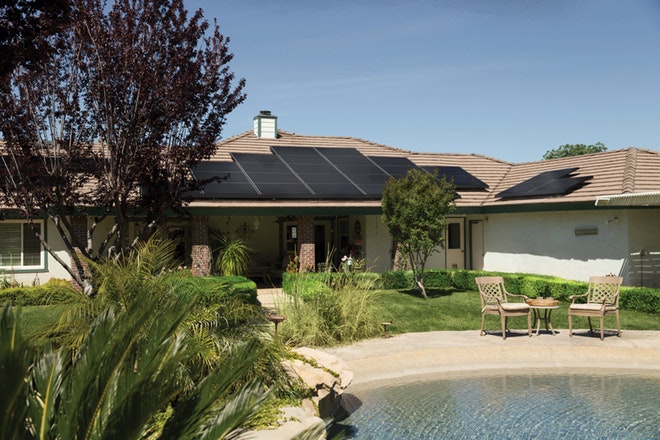A smart home technology is a residence equipped with devices that can communicate with one another. One of the perks of having smart devices is that you can remotely monitor and control everything in your home—from heating and air conditioning systems to lighting, video surveillance, alarm systems, and more—with your smartphone or computer.
Aside from pressing buttons on your device, you can also use voice-controlled assistants like Siri to control your smart home devices.
While having a smart home sounds promising, it still has several pros and cons that you need to weigh first. This article will discuss the advantages and disadvantages of smart home technology to support your decision in achieving or forgoing one.
Advantages of Smart Home Technology
Convenience
With smart home technology, you can control your appliances and home systems from your phone or computer. You can adjust the AC’s temperature, turn on lights, and even lock doors with a few taps on your device.
You can also schedule reminders to turn off lights and appliances when you leave the house to save energy. Additionally, some smart home devices have voice control features that allow you to set commands while you’re busy doing something else. You can direct your smart home device to play music or answer questions without pulling out your phone every time.
Flexibility
Smart technology allows your home to operate at different times depending on how you set them up. For instance, some smart home devices activate once they sense you’re home. Things like your smart light bulbs will automatically turn on and your smart thermostat will automatically set your ideal room temperature. Consequently, these devices will deactivate when you leave.
Another scenario is when you go to bed. Your smart light bulbs can automatically turn themselves off, while your smart thermostat can lower the temperature so that you don’t wake up cold in the middle of the night.
Security
Smart home security systems monitor and secure your house while you’re away. You can place cameras around your property and sensors on certain furnishings like doors and windows. The system will send notifications to your phone if it detects anything unusual inside or outside your home.
Some smart home security systems have built-in microphones and speakers for when they want to talk to someone near their house if something goes wrong. They make you feel safe regardless of where you are because you can monitor your home remotely from an app on your phone.
Energy efficiency
A smart home can reduce your energy consumption to lower your electricity bills, help you save more money, and keep the planet green.
It allows you to set timers on all your appliances and home systems. For instance, you can program your lights to turn off when you leave the house and on when you come back. You can also set smart plugs to turn off appliances like TVs or computers when they’re not in use or consuming too much energy. Setting your smart home devices this way allows you to conserve energy while you’re out.
Cost savings
While most smart home devices are expensive upfront, their payoff is worth it. They allow you to control your energy consumption and reduce your utility bills. One way to save costs is by installing smart switches throughout your home. Smart switches will let you remotely control lights and other appliances to save time and effort.
You can also install smart leak sensors to conserve water at home. They can detect leaks in sinks, toilets, washing machines, and other potentially leaky points in your home so you can address the issue before getting a high water bill.
Customization
With smart home technology, you can customize your lighting, heating, cooling, and alarm systems. You can also optimize your use of window shades and curtains, appliances, and more. Depending on what you need, you don’t have to activate all your appliances simultaneously. You can specify which to turn on and off.
Before you install smart devices, determine where to place them in your home. You don’t want wires in odd places because it will ruin your interior’s design and aesthetic. You can choose which systems will work best in specific rooms while complementing the home’s design.
Test your smart home devices in certain areas of your home first to see if they’ll work best there. Once they do, you can proceed with installing them.
Accessibility
Some smart home technologies provide people with disabilities an easy way to call for help. For instance, smart doorbells allow users to press a button and immediately connect with someone who can send help if they fall or have another emergency.
Another example is smart locks, which allow users to unlock their front door using an app on their phone instead of fumbling around with keys in the dark or rain—something that could be difficult for someone with limited mobility.
Disadvantages of Smart Home Technology
Installation costs
One of the biggest downsides of smart home technology is that it can be expensive to install, depending on how much work needs to be done. For instance, setting up a whole-home security system involves installing cameras and sensors throughout your residence. If you want to save money, you may want to take a DIY approach and install your devices yourself.
Internet issues
The internet is a cornerstone of modern life but can also be a source of frustration. If you have an unstable internet connection and one power source, your smart home devices could disconnect at any time.
f your internet goes out for any reason—such as a power outage or natural disaster—and you don’t have power backup, you’ll no longer be able to control the devices remotely. These issues prevent your smart home technologies from working as intended.
If you want to use your smart home devices, such as your security camera, you’ll need a stable internet connection and a backup power source. Without them, your devices will not function properly.
Difficulty in learning
Smart home technology is a great way to make your life easier. However, some are more complicated to install and use.
Many people have trouble understanding how the various components of their smart homes work together. Hence, they often find themselves confused when something goes wrong with their system and unable to fix it. Some people don’t mind this issue as long as their home is running smoothly, but others find it frustrating and inconvenient.
Compatibility issues
Another common issue is compatibility between the smart home devices and the residence itself. A smart home device needs to communicate with other devices to operate properly. If these devices are incompatible in software and hardware, then they won’t be able to work together.
For instance, if you have an older smart device not designed for software updates, it may not work well with new products equipped with new features or functions.
Accidents
Having too many smart devices can lead to certain accidents. For instance, If you have them plugged into your outlets, you may be at risk for electrical overload and short circuits, which can cause a house fire. If you have more than one smart device plugged in, you should consider unplugging the others you use the least.
Privacy issues
Some smart devices collect information about your behavior, which can compromise your privacy. This information can include what you eat, how often you leave the house, or how much time you spend on social media. They may even figure out your common or ideal activities at home.
Smart devices can also compromise your privacy through the apps connected to them. Many apps require access to certain parts of the device to work properly, which means companies can get data from these devices too.
Additionally, security feeds from your smart home security system can fall into the wrong hands. Criminals can take control of your system, monitor your activity, and even plot something bad if they hack into it.
Outdated technology
As smart home technology providers release new devices every year or a few months, older versions become outdated quickly. This can be a problem for people who can’t always afford newer versions of their smart home devices.
Convenience with Updates
Technology continues to assist people with their lives in numerous ways. Your home is where you rest daily. Naturally, you’d want it to be as safe and convenient as possible. Smart devices can help improve your quality of life. However, you also need to update them now and then to ensure they work as intended.
If you update and take care of your devices, they will last you a long time and provide benefits you will surely enjoy.






